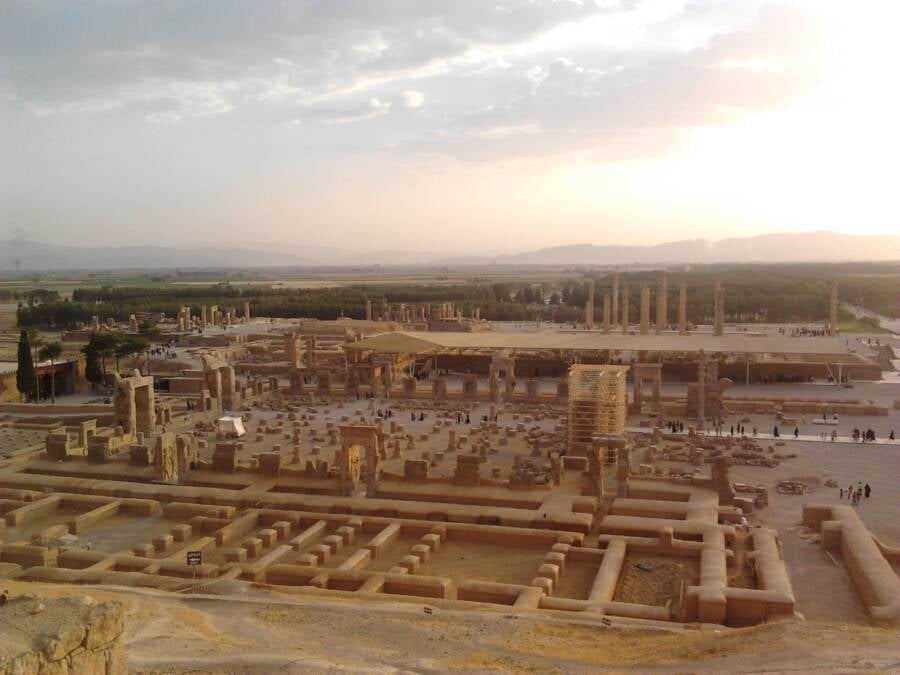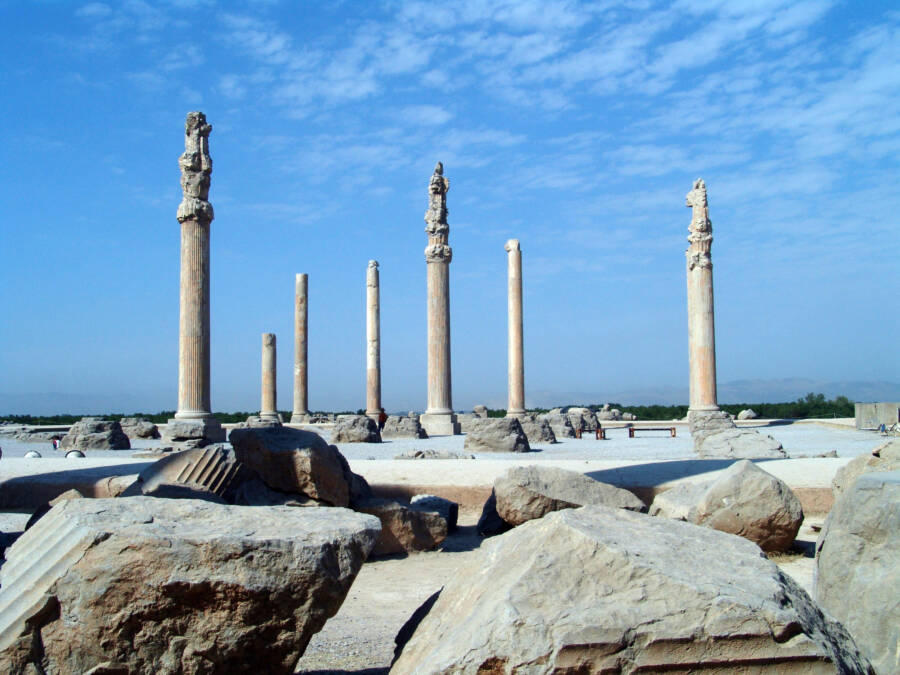Persepolis: The Lost Jewel Of Ancient Persia

F Couin/Wikimedia CommonsThe ruins of Persepolis in present-day Iran.
Persepolis once served as a ceremonial capital of the Achaemenid Empire in Persia. It was located approximately 30 miles northeast of modern Shiraz in southern Iran. Known in Old Persian as Pārsa, this magnificent city was built on a grand terrace against the Kūh-e Raḥmat (Mount of Mercy), showcasing the wealth and power of one of history’s greatest empires.
Construction began under Darius I, who reigned from 522 B.C.E. to 486 B.C.E., though successive rulers continued to add to the city.
The complex featured colossal buildings constructed from precisely cut stone, including the famous Apadana (audience hall), where 13 massive columns still stand today. Elaborate reliefs depicted representatives from across the empire bringing offerings to the king during the festival of the vernal equinox, demonstrating Persepolis’ role as a ceremonial center that symbolized Persian imperial unity and authority.
Persepolis’ glory ended dramatically when Alexander the Great overthrew Darius III, the last of the Achaemenid line. The city’s destruction resulted in an immense loss of accumulated learning, art, and culture, including religious works of early Zoroastrianism written on goat-skin parchment, along with art and tapestries.

درفش کاویانی/Wikimedia CommonsPersepolis’ Apadana palace, or audience hall.
Unlike truly “lost” cities, Persepolis was never completely forgotten by locals, but exploration beginning in the early 17th century led to the modern rediscovery of cuneiform writing, and detailed studies of the trilingual inscriptions found on the ruins contributed to cuneiform’s decipherment in the 19th century.





